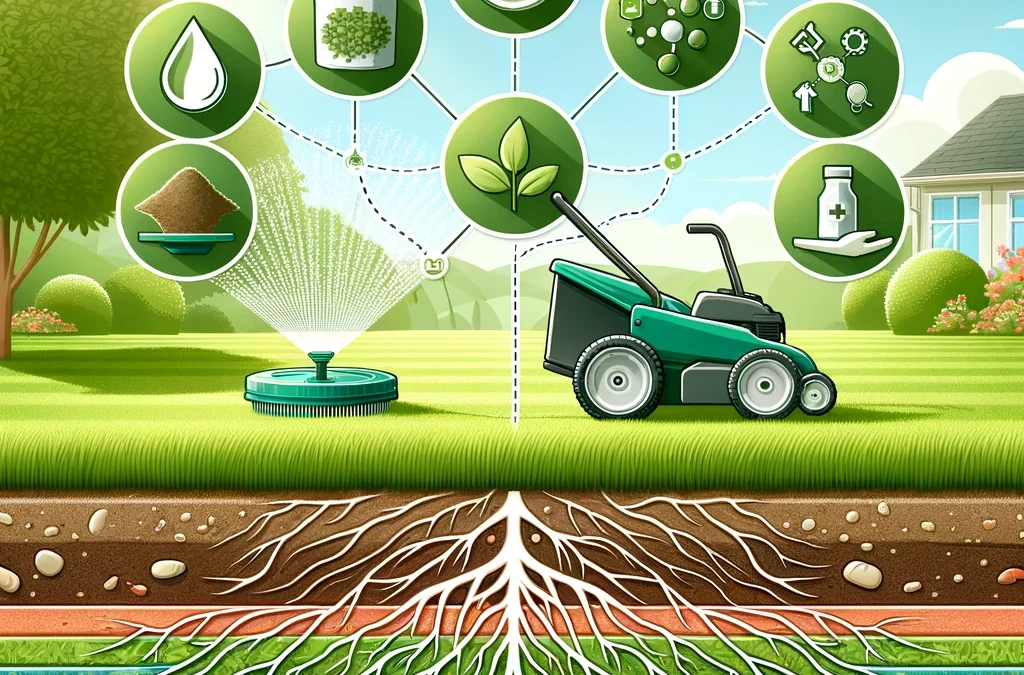Lawn Care in Seattle: Healthy Soil, Sustainable Solutions, and Seasonal Tips
Seattle homeowners know that maintaining a lush, green lawn can be a challenge—especially with our region’s unique blend of rainy winters, dry summers, and acidic soil. At Seattle Sustainable Landscapes, we believe that great lawn care starts below the surface. That’s why our approach prioritizes soil health, organic practices, and thoughtful seasonal maintenance that supports long-term turf vitality.
Whether you’re dealing with moss, thatch, or just trying to green up a tired lawn, this guide will walk you through everything you need to know about sustainable lawn care in the Pacific Northwest.
Why Healthy Soil Is the Foundation of Lawn Care
Before you worry about mowing or fertilizers, take a look at your soil. Healthy soil is the single most important factor in growing a resilient, vibrant lawn.
Here’s what healthy lawn soil should offer:
- Good drainage and structure: Loamy soil with the right mix of sand, silt, and clay supports root growth.
- Ample organic matter: This improves water retention and provides nutrients to turfgrass.
- Balanced pH: Seattle’s soil tends to be acidic. Lime applications can help balance pH and improve nutrient uptake.
🔍 Pro Tip: We always recommend a soil test before beginning any lawn care program. It tells you exactly what your lawn needs—and what it doesn’t.
Organic Fertilizers: Feed the Soil, Not Just the Grass
Unlike synthetic fertilizers that can leach into stormwater systems and disrupt soil biology, organic fertilizers feed the soil microbes that in turn support healthy turf.
Benefits of organic lawn fertilizers:
- Slow-release nutrients for steady growth
- Improved soil texture and microbial activity
- Reduced risk of burning grass or overfeeding
We typically recommend organic blends that include composted poultry manure, kelp meal, bone meal, or alfalfa. Applying in early spring and early fall aligns with natural turf growth cycles in the Seattle climate.
Nematode Treatments: A Natural Approach to Lawn Pests
If you’re struggling with root-feeding pests like grubs or crane fly larvae (a common Seattle problem), beneficial nematodes are a powerful organic solution.
These microscopic organisms naturally seek out and eliminate soil-dwelling pests—without harming earthworms, pollinators, or people. They’re best applied in late summer or early fall when pest populations peak.
Tackling Moss: Why It’s a Symptom, Not the Problem
Seattle’s damp, shady conditions are perfect for moss. But moss isn’t just a nuisance—it’s a sign of underlying issues, such as:
- Poor drainage
- Soil compaction
- Low soil fertility or acidic pH
- Excessive shade
We use targeted moss control treatments (including iron-based solutions) alongside long-term soil corrections and shade management. The goal isn’t just to kill moss—it’s to change the conditions that allow it to thrive.
Dethatching and Aerating: Let Your Lawn Breathe
Over time, lawns accumulate a layer of dead grass and roots known as thatch. A thin layer (under ½ inch) is normal and even beneficial—but too much prevents water, air, and nutrients from reaching the roots.
- Dethatching is typically done in spring or early fall using specialized rakes or machines.
- Aerating involves perforating the soil to relieve compaction and improve drainage—crucial for heavy clay soils common in many Seattle neighborhoods.
💡 Bonus tip: Combine core aeration with topdressing and overseeding for a healthier, thicker lawn.
Mowing Best Practices: Don’t Just Cut—Care
Mowing isn’t just about appearance; it’s a key part of turf health. Improper mowing stresses the grass and invites weeds.
Seattle mowing tips:
- Keep blades sharp to avoid tearing the grass
- Cut no more than ⅓ of the grass height at a time
- Aim for a height of 2.5″–3.5″ depending on grass type
- Leave grass clippings to decompose naturally (a process called “grasscycling”)
A Seasonal Lawn Care Plan for Seattle
Here’s a basic timeline to help keep your lawn on track:
| Season | Tasks |
| Early Spring | Soil testing, lime if needed, organic fertilizer, dethatching, moss treatment |
| Late Spring | Mow regularly, spot weed control, monitor for pests |
| Summer | Water deeply but infrequently (early morning), mow higher to reduce heat stress |
| Early Fall | Aerate, overseed, apply compost/topdressing, second round of fertilizer or nematodes |
| Late Fall | Final mow, leaf removal, prep for winter dormancy |
Lawn Care That Works with Nature
At Seattle Sustainable Landscapes, our lawn care services are designed to nurture the soil, promote biodiversity, and support your outdoor lifestyle—whether you want a play-friendly backyard, a pollinator-friendly border, or a moss-free green space.
We’ll help you make smart, sustainable choices for your specific site conditions, lawn goals, and budget.
📞 Contact us today to schedule a soil assessment or seasonal lawn care service.
Click here to go back to our Blog Page
Click here to go back to our company Home Page
Contact Us for more information!

